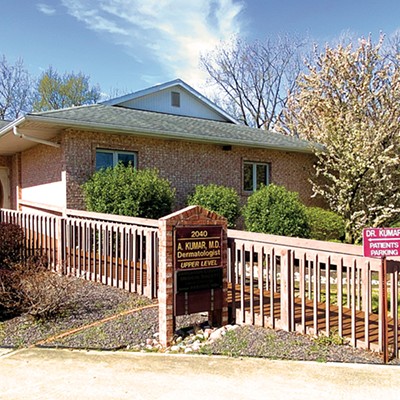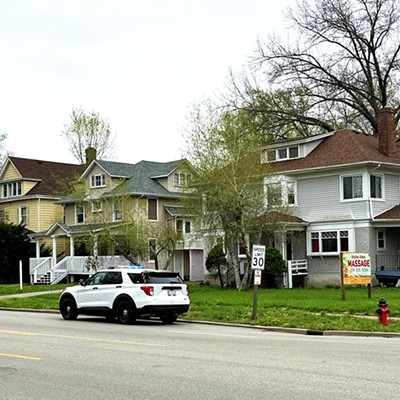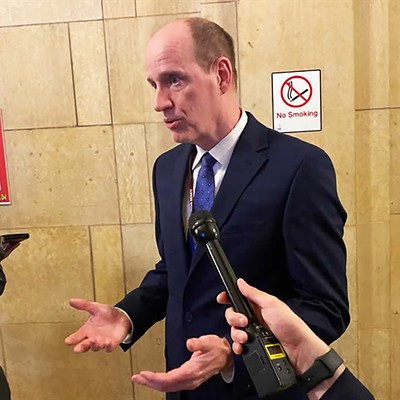The way the state distributes money to schools is unfair and too complicated, according to recent findings of the state’s Education Funding Advisory Committee.
The committee of legislators, which was created in July to recommend a new funding system for education in Illinois, came out with its report Jan. 31. The report includes several recommendations, but focuses on two changes to the current state formula: make it simpler, and help balance the difference between what poor and rich districts receive from the state.
“Our goal was to try to come up with a distribution formula that meets the challenges we have in the state today,” said Sen. Andy Manar, D-Bunker Hill, who co-chaired the committee.
The present school funding formula, which many education leaders label as “complicated,” has been in place since 1997. It includes the “foundation level,” which is the total amount of local and state dollars the state decides should be spent on each student during a school year. Presently, the state’s foundation level is $6,119, although many schools have not been getting that much due to state budget cuts. The state has set the same foundation level since 2010. The Education Funding Advisory Board, however, has recommended that the foundation level be higher. The recommended level for fiscal year 2014 is $8,672 per student.
Manar said it’s clear the current formula doesn’t work.
“This distribution formula that we have in law today isn’t working. It doesn’t meet the challenges that we have,” he said.
The need to spend more money on education wasn’t the committee’s focus. Manar said its recommendations are to change “how” the state distributes money, and “how much” will be decided later.
Under the current formula, 45 percent of the state’s education funding is distributed based on a school district’s property wealth. The committee has recommended that percentage be more than doubled so that 96 percent of the operational education funds should be appropriated through one formula. This could mean districts with higher property values would receive less state money.
In addition to greater consideration of districts’ wealth, the committee reported state funding should give greater consideration to student needs. The report shows that 41 percent of the $6.7 billion spent on education in fiscal year 2014 was distributed through General State Aid, which is based on student and school needs. The remaining 59 percent went to grants that fund specific programs such as transportation and early childhood education.
“More than half of what goes through the state never considers need,” Manar said. “That’s wrong in my opinion.”
The committee recommended that funding should be prioritized and weighted with a greater focus on need, such as at-risk students of lower socio-economic status, children learning English, special education students, as well as gifted and talented students.
Likewise, Manar said one of his chief concerns is education funding in relation to poverty. He said the state doesn’t prioritize funding students in poverty to the degree it should.
“We have to make sure that more of what is appropriated in the state budget addresses students that live in poverty and communities that are suffering,” he said. “It’s an issue that touches every region of our state and our distribution formula has to account for that.”
Cinda Klickna, president of the Illinois Education Association, said the association supports making changes to the formula. The committee’s goals were to address adequacy, equity, student success and support for teachers and leaders. Presently, Klickna said, the state’s funding formula is not meeting these goals.
“Our teachers are having to put in their own money to make up some of these different things,” she said. “Or you have parents that are raising money ... or communities that are doing fundraisers. All of these things are supplementing what the state should be doing.”
Klickna said more research and analysis will be needed to see if the recommendations will work. The report came after the committee heard testimony from education leaders over eight hearings held across the state.
Manar has plans to file a bill this spring that reflects the committee’s findings. In the meantime, the committee has recommended that the state not reduce education funding levels while the state revises the formula.
The full report can be found at www.isbe.state.il.us/EFAC.
Contact Lauren P. Duncan at [email protected].
Leaders: Balance school funding
[
{
"name": "Air - MedRect Combo - Inline Content 1",
"component": "11490391",
"insertPoint": "3",
"requiredCountToDisplay": "1",
"parentWrapperClass": "fdn-ads-inline-content-block"
},{
"name": "Air - MedRect Combo - Inline Content 2",
"component": "11490392",
"insertPoint": "7",
"requiredCountToDisplay": "5",
"parentWrapperClass": "fdn-ads-inline-content-block"
},{
"name": "Air - MedRect Combo - Inline Content 3",
"component": "11490393",
"insertPoint": "12",
"requiredCountToDisplay": "9",
"parentWrapperClass": "fdn-ads-inline-content-block"
}
]
Illinois Times has provided readers with independent journalism for almost 50 years, from news and politics to arts and culture.
Your support will help cover the costs of editorial content published each week. Without local news organizations, we would be less informed about the issues that affect our community..
Got something to say?
Send a letter to the editor and we'll publish your feedback in print!















